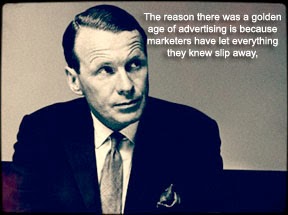Talk to most people in social media, content marketing, or public relations and almost all of them agree that sharing is what makes social media tick. How often something is shared speaks to the relevance of the topic, quality of the content, and influence of the person creating or curating it.
For evidence, look no further than search engines and social networks themselves. They have made this measurement mission critical. Search engines look at shareability, authorship, and freshness. Social networks validate influencer rank and reach to quantify importance. Some news outlets now pay journalists bonuses if they bring in more impressions per article than their colleagues.
Even Facebook recently announced that trending will become an all-important means of measurement. Brands will get more exposure if their content is featured as a top story. To do it, all they have to do is create or curate popular content that gets more shares, clicks, and comments.
Why?
By placing an overemphasis on sharing as a measurement, search and social platforms create competition among content creators and curators that can only be won by investing in more time, better connections, more content, paid content, and potentially popular content. At the same time, search engines and social networks thrive because this draws attention and people to the platform, which makes it more valuable to content creators and curators. If you sense a vicious cycle, it is.
And yet, people who participate on social networks use a completely different set of criteria than marketers and content creators. There is a different psychology to sharing among consumers.
Five primary drivers behind the psychology of sharing.
The majority of shares can be attributed to five primary motivations. People share content to be valuable or entertaining to others (self-esteem), define themselves as human beings (identity), grow and nurture relationships (reciprocity), to get the word out about content and brands (persuasiveness), and to complete there own sense of self-fulfillment (affirmation). Let's take a closer look.
1. Self-Esteem. There are dozens of studies that link volunteerism and self-esteem primarily because helping others makes people happy. One special report put out by Harvard Health Publications even revealed that the more people volunteer, the happier they become.
While some advocates might argue that social sharing and volunteering are vastly different (and they are right in terms of tangible outcomes), our brains disagree. Knowing that an article we share helped someone or the joke we tell gives someone else a laugh produces the same positive mental impact as donating hard time and dollars (sometimes more).
2. Identity. Marketers aren't the only ones who want to establish their identity online or online identity. It's human nature to project oneself into written and visual communication (hopefully with authenticity). And most social platforms are designed with tools and categories to help people do it.
To do it, we tend to highlight aspects of who we are by sharing likes and interests (and commenting on the likes and interests of others) that reinforce whatever identity we want to project. Interestingly enough, this was especially important among early adopters in social media because it gave them an opportunity to establish their identity based on their passion and ideas over experience and expertise.
3. Reciprocity. The concept of reciprocity goes hand in hand with the connectivity social platforms provide. Just as people develop friendships based on proximity (location) and intellectually/emotionally (shared interests), they create similar connections online and then share content to reaffirm their connections.
As long as the desire to demonstrate reciprocity doesn't conflict with an established identity, sharing not only demonstrates an interest in what we share, but also supports the ideas, beliefs, and interests of friends, groups, or networks. It demonstrates that we belong based upon similar reactions to the same content. And sometimes, people share just to support to the content creator or curator.
4. Persuasiveness. Although most people self-select their connections online, it is still very unlikely (and perhaps impossible) that all friends and associates will unconditionally agree with and support every idea, interest, and position. And yet, people are all hardwired to find more similarities.
When it doesn't occur naturally, people turn to persuasion. Even when we don't recognize it, people have a tendency to share things not because it helps others but because they know it will help others — content from self-selected sources (or other connections who already agree). Ergo, persuasion not only demonstrates our affinity to something, but also solicits others within our network to agree.
5. Affirmation. One of the most interesting aspects about social networks is the degree to which different networks satisfy ego needs through self-affirmation. In other words, people are not only content with trying to help others, establishing identity, making connections, and occasionally persuading people to their way of thinking, but they also need affirmation that whatever they did, said, or shared was worthy.
This is why almost all social networks provide self-affirmation actions supplied as likes, favorites, comments, shares, retweets, and other indicators that marketers covet. But unlike marketers, people aren't necessarily counting conversions. They're content in knowing someone will affirm their share.
How does this reconcile with with your organization's marketing efforts?
When marketers, content creators, and social media professionals develop a content strategy, they often obsess over organizational messages and some sort of conversion metric. But when you compare their strategies to the psychology of sharing, they come up short. Why?
If you want people to share content, you need to develop content that allows them to help or entertain others, reinforce their identity, or provide a persuasive argument (assuming they agree with you) to reinforce what they already believe or reaffirm their belongingness to a group that believes it. And then? Be prepared to provide reciprocal support and affirmation in return.
If this doesn't sound like a sound strategy for your organization, you are probably right. The model that social networks have devised for marketers to compete in is different than the model consumers participate in on a daily basis. You see, consumers aren't just looking for content that is worth sharing. They share content that contributes to their self-worth. How does that change your strategy?
For evidence, look no further than search engines and social networks themselves. They have made this measurement mission critical. Search engines look at shareability, authorship, and freshness. Social networks validate influencer rank and reach to quantify importance. Some news outlets now pay journalists bonuses if they bring in more impressions per article than their colleagues.
Even Facebook recently announced that trending will become an all-important means of measurement. Brands will get more exposure if their content is featured as a top story. To do it, all they have to do is create or curate popular content that gets more shares, clicks, and comments.
Why?
By placing an overemphasis on sharing as a measurement, search and social platforms create competition among content creators and curators that can only be won by investing in more time, better connections, more content, paid content, and potentially popular content. At the same time, search engines and social networks thrive because this draws attention and people to the platform, which makes it more valuable to content creators and curators. If you sense a vicious cycle, it is.
And yet, people who participate on social networks use a completely different set of criteria than marketers and content creators. There is a different psychology to sharing among consumers.
Five primary drivers behind the psychology of sharing.
The majority of shares can be attributed to five primary motivations. People share content to be valuable or entertaining to others (self-esteem), define themselves as human beings (identity), grow and nurture relationships (reciprocity), to get the word out about content and brands (persuasiveness), and to complete there own sense of self-fulfillment (affirmation). Let's take a closer look.
1. Self-Esteem. There are dozens of studies that link volunteerism and self-esteem primarily because helping others makes people happy. One special report put out by Harvard Health Publications even revealed that the more people volunteer, the happier they become.
While some advocates might argue that social sharing and volunteering are vastly different (and they are right in terms of tangible outcomes), our brains disagree. Knowing that an article we share helped someone or the joke we tell gives someone else a laugh produces the same positive mental impact as donating hard time and dollars (sometimes more).
2. Identity. Marketers aren't the only ones who want to establish their identity online or online identity. It's human nature to project oneself into written and visual communication (hopefully with authenticity). And most social platforms are designed with tools and categories to help people do it.
To do it, we tend to highlight aspects of who we are by sharing likes and interests (and commenting on the likes and interests of others) that reinforce whatever identity we want to project. Interestingly enough, this was especially important among early adopters in social media because it gave them an opportunity to establish their identity based on their passion and ideas over experience and expertise.
3. Reciprocity. The concept of reciprocity goes hand in hand with the connectivity social platforms provide. Just as people develop friendships based on proximity (location) and intellectually/emotionally (shared interests), they create similar connections online and then share content to reaffirm their connections.
As long as the desire to demonstrate reciprocity doesn't conflict with an established identity, sharing not only demonstrates an interest in what we share, but also supports the ideas, beliefs, and interests of friends, groups, or networks. It demonstrates that we belong based upon similar reactions to the same content. And sometimes, people share just to support to the content creator or curator.
4. Persuasiveness. Although most people self-select their connections online, it is still very unlikely (and perhaps impossible) that all friends and associates will unconditionally agree with and support every idea, interest, and position. And yet, people are all hardwired to find more similarities.
When it doesn't occur naturally, people turn to persuasion. Even when we don't recognize it, people have a tendency to share things not because it helps others but because they know it will help others — content from self-selected sources (or other connections who already agree). Ergo, persuasion not only demonstrates our affinity to something, but also solicits others within our network to agree.
5. Affirmation. One of the most interesting aspects about social networks is the degree to which different networks satisfy ego needs through self-affirmation. In other words, people are not only content with trying to help others, establishing identity, making connections, and occasionally persuading people to their way of thinking, but they also need affirmation that whatever they did, said, or shared was worthy.
This is why almost all social networks provide self-affirmation actions supplied as likes, favorites, comments, shares, retweets, and other indicators that marketers covet. But unlike marketers, people aren't necessarily counting conversions. They're content in knowing someone will affirm their share.
How does this reconcile with with your organization's marketing efforts?
When marketers, content creators, and social media professionals develop a content strategy, they often obsess over organizational messages and some sort of conversion metric. But when you compare their strategies to the psychology of sharing, they come up short. Why?
If you want people to share content, you need to develop content that allows them to help or entertain others, reinforce their identity, or provide a persuasive argument (assuming they agree with you) to reinforce what they already believe or reaffirm their belongingness to a group that believes it. And then? Be prepared to provide reciprocal support and affirmation in return.
If this doesn't sound like a sound strategy for your organization, you are probably right. The model that social networks have devised for marketers to compete in is different than the model consumers participate in on a daily basis. You see, consumers aren't just looking for content that is worth sharing. They share content that contributes to their self-worth. How does that change your strategy?














































